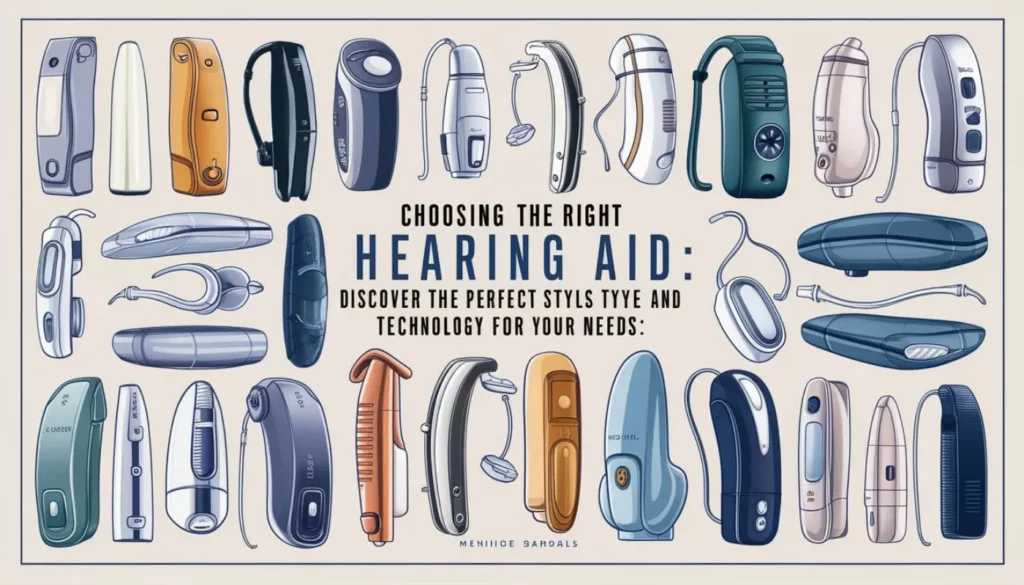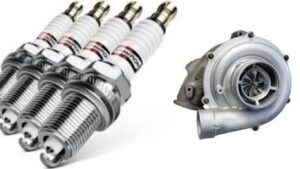Hearing loss can significantly impact your quality of life, but finding affordable treatment options can be challenging. Fortunately, many insurance providers, including Humana, offer coverage for hearing aids and related services. Tune in to The Flex Audiology Show #6 to demystify Humana’s hearing aid coverage and learn how to navigate the process seamlessly.
This post will provide an in-depth look at Humana’s insurance policies for hearing aids, drawing insights from the informative Flex Audiology Show episode #6. By understanding the intricacies of coverage, eligibility criteria, and available resources, you can make informed decisions about your hearing healthcare.
The Importance of Hearing Healthcare
Hearing loss is a prevalent issue that affects millions of Americans, and its impact extends far beyond the inability to hear sounds clearly. Untreated hearing loss can lead to social isolation, cognitive decline, and a diminished overall quality of life. Fortunately, advancements in hearing aid technology have made it possible to regain a significant portion of one’s hearing abilities, improving communication and overall well-being.
According to the National Institute on Deafness and Other Communication Disorders (NIDCD), approximately 15% of American adults aged 18 and older report some trouble hearing. This figure rises to 33% for adults aged 65 and older. Hearing aids are a crucial solution for individuals experiencing hearing loss, enabling them to engage more fully in daily activities and maintain their independence.
Understanding Humana Insurance Coverage for Hearing Aids

Humana, one of the nation’s leading health insurance providers, offers a range of plans that include coverage for hearing aids and related services. Understanding the specifics of these plans is essential for individuals seeking affordable hearing healthcare solutions.
Overview of Humana’s Hearing Aid Coverage Plans
Humana’s hearing aid coverage is typically offered through their Medicare Advantage plans, which are comprehensive healthcare plans that replace and supplement Original Medicare. These plans may include:
- Humana Medicare Advantage HMO Plans: These plans cover hearing aids, evaluations, fittings, and follow-up appointments through the TruHearing network of providers.
- Humana Medicare Advantage PPO Plans: In addition to the TruHearing network, these plans may also provide coverage for out-of-network providers, albeit with higher out-of-pocket costs.
Eligibility for Humana’s hearing aid coverage is primarily based on enrollment in one of their Medicare Advantage plans. However, it’s essential to review the specific plan details, as coverage amounts and copayments may vary.
Covered Services
Humana’s hearing aid coverage typically includes the following services:
- Hearing Evaluations: Regular hearing tests to assess the degree and type of hearing loss.
- Hearing Aid Selection and Fitting: Guidance from licensed audiologists in choosing the appropriate hearing aid model and ensuring a proper fit.
- Follow-up Appointments: Ongoing support and adjustments to optimize the performance and comfort of the hearing aids.
It’s important to note that while Humana covers a portion of the costs associated with hearing aids and services, there may be copayments or coinsurance requirements, depending on the plan. Additionally, some plans may have coverage limits or restrictions on the types of hearing aids covered.
The Flex Audiology Show #6: A Comprehensive Guide

The Flex Audiology Show is a valuable resource for individuals seeking information about hearing healthcare and insurance coverage. Episode #6, titled “Understanding Humana Insurance Coverage for Hearing Aids,” provides a comprehensive overview of Humana’s hearing aid policies and resources.
During the show, audiologists and insurance experts discuss:
- Eligibility criteria for Humana’s hearing aid coverage
- Covered services and exclusions
- Out-of-pocket costs and copayment structures
- The TruHearing network and its benefits
- Tips for navigating the claim submission process
By tuning in to this informative episode, listeners can gain a deeper understanding of Humana’s hearing aid coverage, enabling them to make well-informed decisions about their treatment options.
Coverage Limits and Out-of-Pocket Costs
While Humana’s hearing aid coverage can provide significant financial relief, it’s crucial to understand the potential out-of-pocket costs and coverage limits associated with each plan. These may include:
- Copayments: Many Humana plans require a fixed copayment for hearing evaluations, fittings, and follow-up appointments. For example, a common copayment structure is $45 for routine hearing exams and $699 or $999 per hearing aid.
- Coinsurance: Some plans may require coinsurance, where the insured pays a percentage of the total cost, rather than a fixed copayment.
- Coverage Limits: Humana’s plans often have limitations on the frequency of hearing aid replacements or the types of devices covered. For instance, some plans may only cover basic hearing aid models, while premium devices may require an additional out-of-pocket cost.
To illustrate the potential out-of-pocket costs, consider the following example:
| Service | Copayment |
| Routine Hearing Exam | $45 |
| Hearing Aid (per ear) | $699 |
| Total Cost for Hearing Aids and Exam | $1,443 |
Read As: Is Hearing Aid Coverage Included in BlueCross BlueShield Plans?
In this scenario, an individual with Humana’s coverage would pay $1,443 out-of-pocket for a routine hearing exam and two basic hearing aids. It’s essential to review the specific details of your Humana plan to understand your potential financial responsibility.
Navigating the Process: Tips from Experts
Obtaining hearing aid coverage from Humana can be a straightforward process when you follow the right steps. During The Flex Audiology Show #6, experts shared valuable tips for navigating the process:
- Consult with a TruHearing Provider: Humana partners with the TruHearing network of audiologists to provide covered services. Start by locating a TruHearing provider in your area.
- Obtain Pre-Approval: Before proceeding with any treatment or hearing aid purchase, it’s advisable to obtain pre-approval from Humana. This ensures that the services and devices are covered under your plan.
- Follow Submission Guidelines: Carefully review and follow Humana’s guidelines for submitting claims and supporting documentation, such as audiograms and medical records.
- Utilize Available Resources: Humana offers various resources, including customer service representatives and online portals, to assist you throughout the process. Don’t hesitate to seek clarification or guidance when needed.
By following these expert tips, you can streamline the process and maximize the benefits of your Humana hearing aid coverage.
Choosing the Right Hearing Aid

While Humana’s coverage can help alleviate the financial burden of hearing aids, it’s equally important to choose a device that meets your specific needs and lifestyle. Hearing aids are not a one-size-fits-all solution, and selecting the right model can make a significant difference in your overall satisfaction and hearing experience.
When choosing a hearing aid, consider the following factors:
- Degree of Hearing Loss: Mild, moderate, or severe hearing loss may require different types of hearing aids with varying levels of amplification and features.
- Lifestyle and Activity Level: If you lead an active lifestyle or participate in sports, you may benefit from water-resistant or sweat-resistant hearing aids.
- Manual Dexterity: Some hearing aids are easier to handle and adjust than others, which can be important for individuals with limited manual dexterity.
- Bluetooth Connectivity: Many modern hearing aids can connect wirelessly to smartphones, televisions, and other devices, providing enhanced sound quality and convenience.
- Humana’s Approved Devices: While Humana covers a range of hearing aids, some premium or specialized devices may require additional out-of-pocket costs.
Consult with a licensed audiologist to discuss your specific needs and preferences. They can provide personalized recommendations and guidance on selecting the right hearing aid model covered by your Humana plan.
Conclusion
Navigating the world of hearing aid coverage can be daunting, but with the right information and resources, it becomes much more manageable. By understanding Humana’s insurance policies, coverage limits, and available resources, you can make informed decisions about your hearing healthcare.
Remember, prioritizing your hearing health is crucial for maintaining an active, independent, and fulfilling lifestyle. Don’t hesitate to explore your insurance options, consult with audiologists, and take advantage of the valuable resources provided by organizations like The Flex Audiology Show.
To get started, review your Humana plan details, locate a TruHearing provider in your area, and schedule a hearing evaluation. With the right hearing aid and the support of your insurance coverage, you can embark on a journey towards improved communication and overall well-being.

Marathi author Anju Mary has made a mark in the literary world with her innovative storytelling and deep passion for reading. Her unique narrative style and creative approach offer readers a distinctive and enriching experience, solidifying her reputation as a prominent writer.











